Forget the sign-stealing scandal. A new wave of physically dominant, swaggering stars will restore your love for Major League Baseball. Meet the starting nine of the 2020 MLB season.
The Most Standout Baseball Players of the 2020 MLB Season
1. Pete Alonso
New York Mets, first base
LET ME GET THIS STRAIGHT, Pete Alonso is saying to a director for Jimmy Kimmel Live! The 25-year-old Mets first baseman is standing in Brooklyn’s Grand Prospect Hall, an ornate French Renaissance–style ballroom about half a century past its heyday. He’s dressed to the nines in a svelte black tuxedo that makes his blue eyes twinkle like a disco ball. He is also enormous—6-foot-3, 245 pounds, what used to be called “country strong,” which is fitting, since he was born and bred in the country parts of Florida, not the bikini parts—and he’s gripping a baseball bat.
You’re gonna toss me a baseball, he repeats to the director, and you want me, Pete Alonso, aka the Polar Bear, the National League Rookie of the Year, the basher of a major-league-rookie-record 53 home runs, the most by any first-year player, ever, in the history of baseball—me—to swing at it? In here? Are you sure?
The cameraman looks at the director. The director looks at the segment producer. The segment producer looks over to Mr. and Mrs. Halkias, two Greek-Americans who bought Grand Prospect Hall in 1981 and whose hearing is spotty. Everyone looks at someone else and blinks. “I’m just letting you know,” Alonso says, “shit is going to get broken.”
The Grand Prospect Hall has a rich underworld history from the Prohibition era, but these days it’s legendary among born-and-bred New York sports fans, like Jimmy Kimmel, thanks to a pair of no-budget TV ads, produced by Mr. and Mrs. Halkias, starring Mr. and Mrs. Halkias. The first began airing in 1986 and ran roughly 35 times a day, every single day—most notably during Mets broadcasts—until 2009, when the Halkiases rebooted it with modern visual effects, and that version has aired 35 times a day every day since. Today, with the help of Alonso, the Halkiases are starring in a very special third installment, produced by Jimmy Kimmel Live!
Don’t get the Polar Bear wrong—he would be delighted to break some shit. Who among us hasn’t fantasized about crushing baseballs in a place totally inappropriate for crushing baseballs, just to see what happens? Unfortunately, Alonso, like a superhero who knows all too well that he can melt faces with a passing glance, is going to need much clearer authorization before he starts swinging a bat in here. “I’m a bull in a china shop, and this”—he gestures around the room—“is as close to a china shop as there is.”
He glances over at Mr. Halkias. Until this moment, the older gentleman has seemed at least mildly bewildered by everything happening in his ballroom today. But his expression changes when he hears Alonso say the words broken and bull and china shop. Coppola filmed The Cotton Club here. Al Capone reportedly earned his famous facial scar here. No one is hitting any baseballs in here. Alonso notes Mr. Halkias’ stricken look and concludes, Yes, hitting a baseball in this pristine antique ballroom would be dumb. His life mantra is “keep it simple,” and hitting anything in here would definitely complicate matters.
OK, the segment director says, thinking quickly. How about this: What if the crew tosses the ball to Alonso and he only fakes as if he’s going to swing? Like, psyche! “Well…” Alonso says. “But then I’m gonna wanna hit it.”
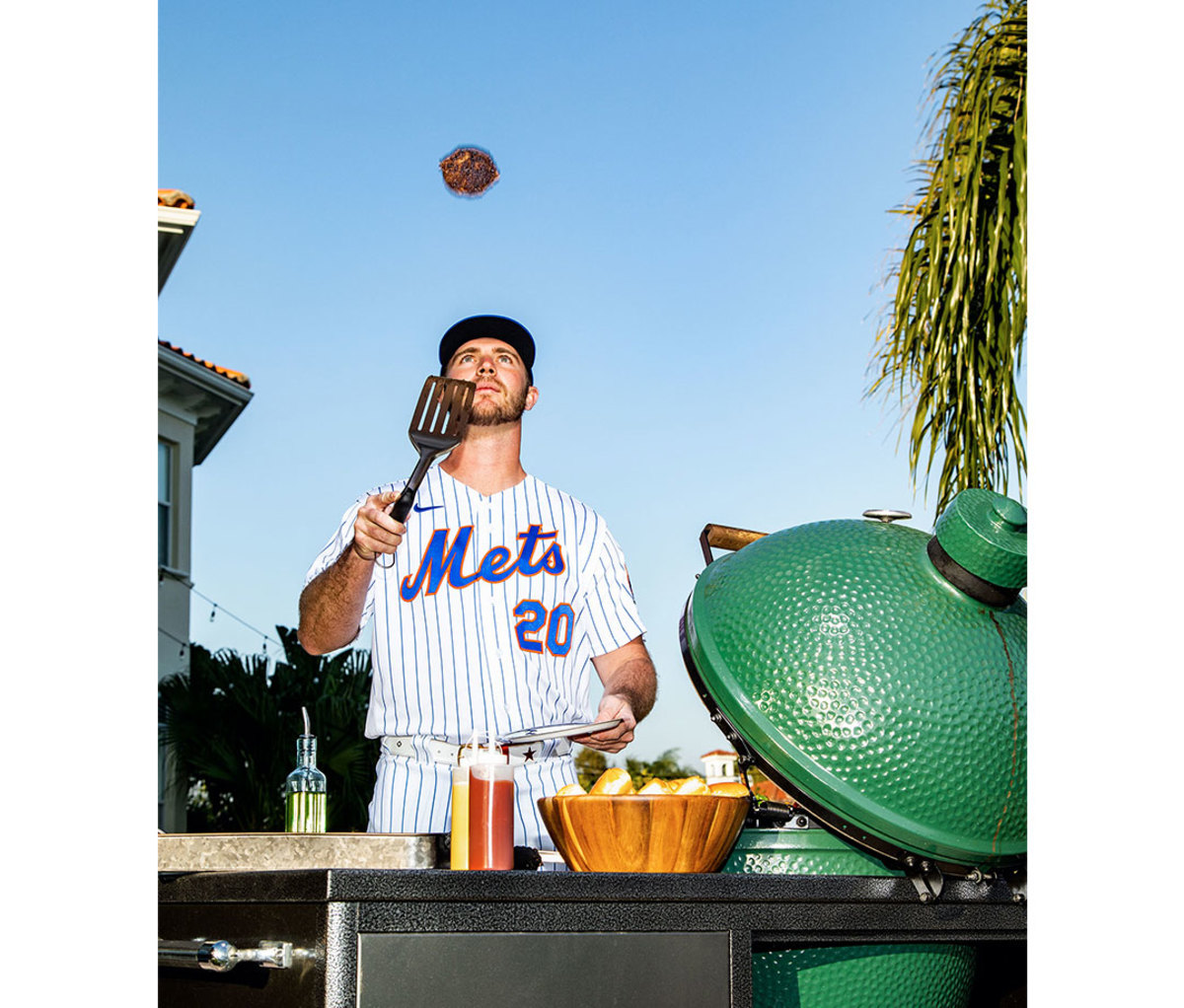
IN NOVEMBER 2018, Brodie Van Wagenen, in his first official act as the new general manager for the New York Mets, flew to Arizona to take Pete Alonso to dinner. “I think I was on the job for 48 hours,” Van Wagenen recalls. Alonso had carried the Florida Gators to the College World Series in 2016, clubbed his way up the minor-league ranks in two seasons, and earned himself an invitation to Scottsdale as the starting first baseman at the annual minor-league Fall Star Game. “I don’t remember where we went,” Alonso says, “but I remember what I had to eat: lamb adobo.”
He savored the meal with Van Wagenen as much as he seems to savor saying adobo: “It was awesome.” Even in everyday conversation, Alonso is a bundle of energy, abounding with Chris Prattian good cheer, the words tumbling out of his mouth like they can’t wait to taste the air. For Pete Alonso, everything is awesome.
Alonso had an affinity for Queens even before he entered the Mets system. When his grandfather, Peter Conrad Alonso, fled the Spanish Civil War for the safety of America, he landed in the NYC borough. His son, Big Pete, ultimately moved to the Tampa area, which is where he and his wife raised the third Pete, who is now bigger than Big Pete.
Van Wagenen made the meal with Pete III his “number one action,” because he knew their baseball futures depended on each other. If Van Wagenen was going to do his job and bring a title to Queens, Alonso would have to do his job and become the best hitter ever to wear a Mets uniform. While the big kid feasted, the rookie GM made him a promise: If he earned a spot in spring training, he would be on the Mets’ 2019 Opening Day roster. No more minor leagues. The first-base job is open, he told Alonso. Go take it.
“What I’ve learned about Pete,” Van Wagenen says, “is that he rises to every challenge put in front of him. He knew people questioned his defense, and he wanted to prove that he was capable of being not only a major-league first baseman but a Gold Glove-caliber first baseman. He has a burning desire to be great.”
Alonso applies his “keep it simple” mantra to choosing hobbies (fishing), getting dressed (T-shirts, jeans), and finding love (engaged to his longtime boo). “If things are complicated,” he explains, “it’s a tougher situation to deal with. Things are better when they’re simple.” It’s an easy thing to say but much harder to do. Yet Alonso brings a clarity of purpose to everything he does that belies his years.
Alonso bashes balls so hard that they leave the stadium in a comet streak of powderized molecules, vanishing into the night sky.
He made the Mets’ Opening Day roster, hit his first career home run on April 1, and never stopped. Most rookie sluggers have sine-wave seasons—boom, bust, boom, bust. Not the Polar Bear. There was no wave, only booms, every week, every month, all season long.
He broke the Mets’ rookie home-run record, previously held by Darryl Strawberry, on June 23—just 77 games into the season. On July 8, he won the Home Run Derby, earning a $1 million prize, which was nearly double his 2019 salary.
On August 26, with a month left in the season, he broke the Mets’ single-season home-run record.
On September 20, he hit his 50th homer, and then, on the next-to-last day of the season, he set an MLB record with No. 53.
Even if Alonso had hit a mere 35 home runs, the tale of that lamb adobo dinner with Van Wagenen would get told in articles like this one. But do you know how many Hall of Fame power hitters never hit 53 home runs in a single season? Pretty much all of them. Only 17 men in baseball history have hit more home runs in any season. Yet somehow the flat numerical digits of Alonso’s final tally don’t do justice to the experience of watching him smack all those homers. Alonso bashes balls so hard that they leave the stadium in a comet streak of powderized molecules, vanishing into the night sky. You’ve never heard such a satisfying thock as the sound of his bat connecting with a ball.
A BITTER TRUTH about professional sports is that teammates don’t always love it when some kid rookie comes in and makes all the veterans look washed up before he even unpacks his duffel bag. Right away, though, Alonso charmed everyone with his boisterous good cheer. He upgraded the Mets’ traditional post-victory hashtag—#LGM (Let’s Go Mets)—to something with a bit more bite—#LFGM. It caught on and now post-win #LFGMs are almost as ubiquitous as the safe-for-work version. The hashtag upgrade came after an early-season loss, a down moment when Alonso was flipping through Instagram and trying to fire up Mets fans, and himself.
“You know when you sit in bed and you get tons of thoughts in your head, stuff just kind of comes to mind?” he asks. “It was just kind of the mentality like, Yeah, so what? We’re just going to keep grinding.”
In the second half of the season, when the Mets started piling up walk-off ninth-inning wins, he created a primal new victory celebration: chasing down the guy who delivered the winning hit and ripping the jersey off his body. (Look, Ma, no wires!)
By the time it was over, Alonso’s first season with the Mets had earned its place in history as one of the franchise’s Metsiest yet—a roller coaster of innard-stomping losses, delirious triumphs, hurled chairs, bullpen implosions, and a punch-drunk sprint to the playoffs that came up three games short. Night in and night out, it was a big, beautiful, bonkers year—the Year of the Polar Bear.
When 2020 began, things got even nuttier for the Mets. Most notably, in January, the Mets “mutually parted ways” with their new manager, Carlos Beltran, before he even managed a single game, owing to his role in the Houston Astros’ sign-stealing operation. Suddenly, Alonso’s comic turn playing a violin with his bat in the Jimmy Kimmel Live! sketch felt as if it happened in an alternate dimension.
This spring, once the Polar Bear comes out of hibernation from his fishing boat near Tampa, the Mets will need him to do more than bash home runs. They’ll need him to help change the subject. They don’t need him to hit 53 home runs again—or they better not, because almost no one ever has, at least not without cheating, like McGwire did.
“If teams are pitching around, being more tentative at the zone,” Alonso says, “then I’ll take my walk and get on base and create damage another way.”
He’s supremely confident, though, that he’ll continue to create damage his preferred way. It has little do with ego, and everything to do with physics.
“Home runs are supposed to be accidents,” he says, but “for me, it’s like, I’m a big, strong guy, and if I keep a short, compact swing and not try and do too much, if I hit the ball on the sweet spot, it’s going to go very far.” In other words, he just needs to keep it simple.
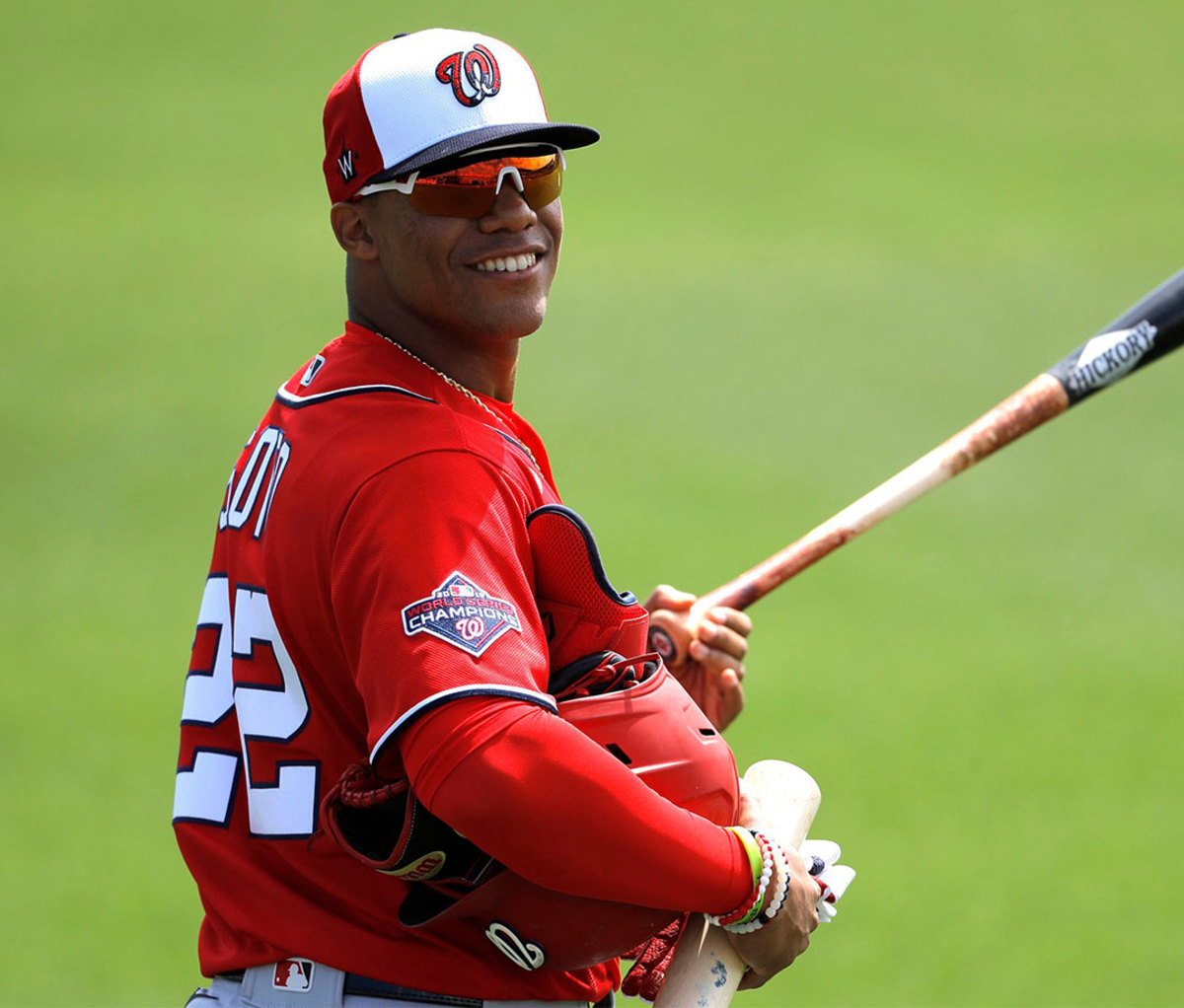
2. Juan Soto
Washington Nationals, left field
Baseball is saturated with numbers, but stat sheets can tell you only so much about a player. Last fall, 21-year-old Dominican outfielder Juan Soto helped carry the Nationals to their first World Series title by hitting three homers and becoming the first player 21 or younger since Mickey Mantle to have seven RBIs in a single Fall Classic. Those are big numbers. But you don’t become a rising star like Soto just by putting up numbers. You have to make moments.
One of Soto’s biggest came in Game 5 of the National League Division Series with the Dodgers, when he homered off Cy Young Award winner Clayton Kershaw—tying the game and sending it into extra innings. The Nats won off a Howie Kendrick grand slam. “Everything comes from when I was a kid,” Soto explains. “I played a lot of tournaments representing the Dominican Republic. I just try to forget about the crowd and think about the pitcher and me. It’s the same game I’ve always played.” That homer was a big moment, but Soto’s most memorable one came in Game 6 of the World Series. The Astros’ Alex Bregman celebrated an early homer by carrying his bat all the way to first base before handing it off—an übercocky move. In the fifth, Soto got revenge by smacking a homer, then carrying his bat to first. It was one of the “more creative troll jobs,” a sportswriter later noted. But after the game, Soto said admiration, not fury, fueled the move. “I just thought it was pretty cool—I wanna do it too.’ ”
In just his second season, Soto managed to become the talk of baseball with game-changing turns at bat and mild controversy to boot. This season, he knows everybody will be coming for him and the Nats. He isn’t worried, at least not at the moment. — Matt Jussim
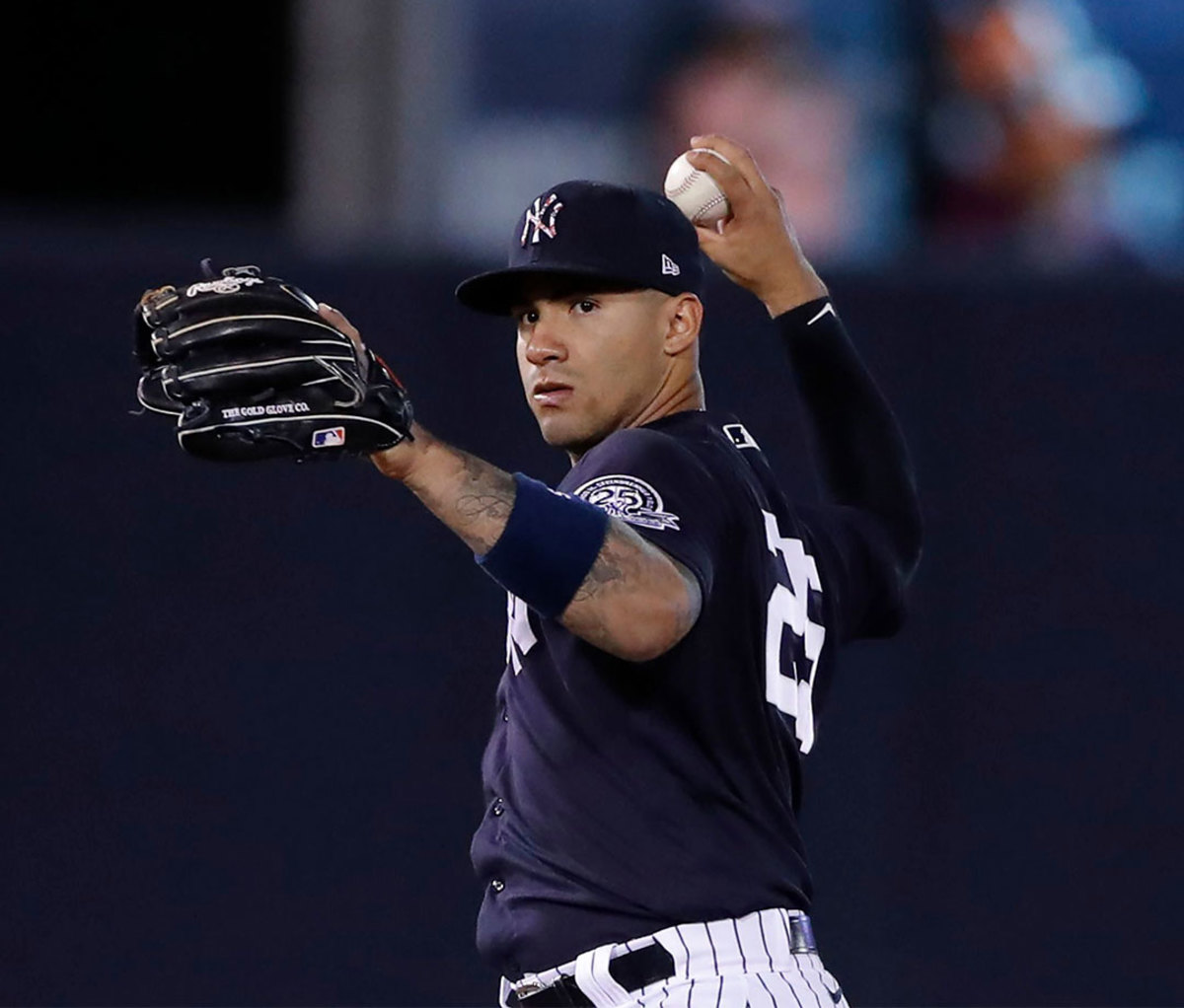
3. Gleyber Torres
New York Yankees, second base
In his first two seasons, Torres hit 62 home runs—which is impressive enough but downright staggering given he plays second base. For a middle infielder, that’s a Hall of Fame–caliber start, which is exactly where the Yankees expect him to wind up. His performance puts him in rare statistical territory—the same as A-Rod. And he’s got the chutzpah to match. The Yanks celebrated each win last season by awarding a “player of the game” belt. Before Game 1 of the ALCS against the Astros, Torres told teammate Aaron Judge that tonight’s belt belonged to him. He was right. He drove in five runs. The Yankees won 7-0.
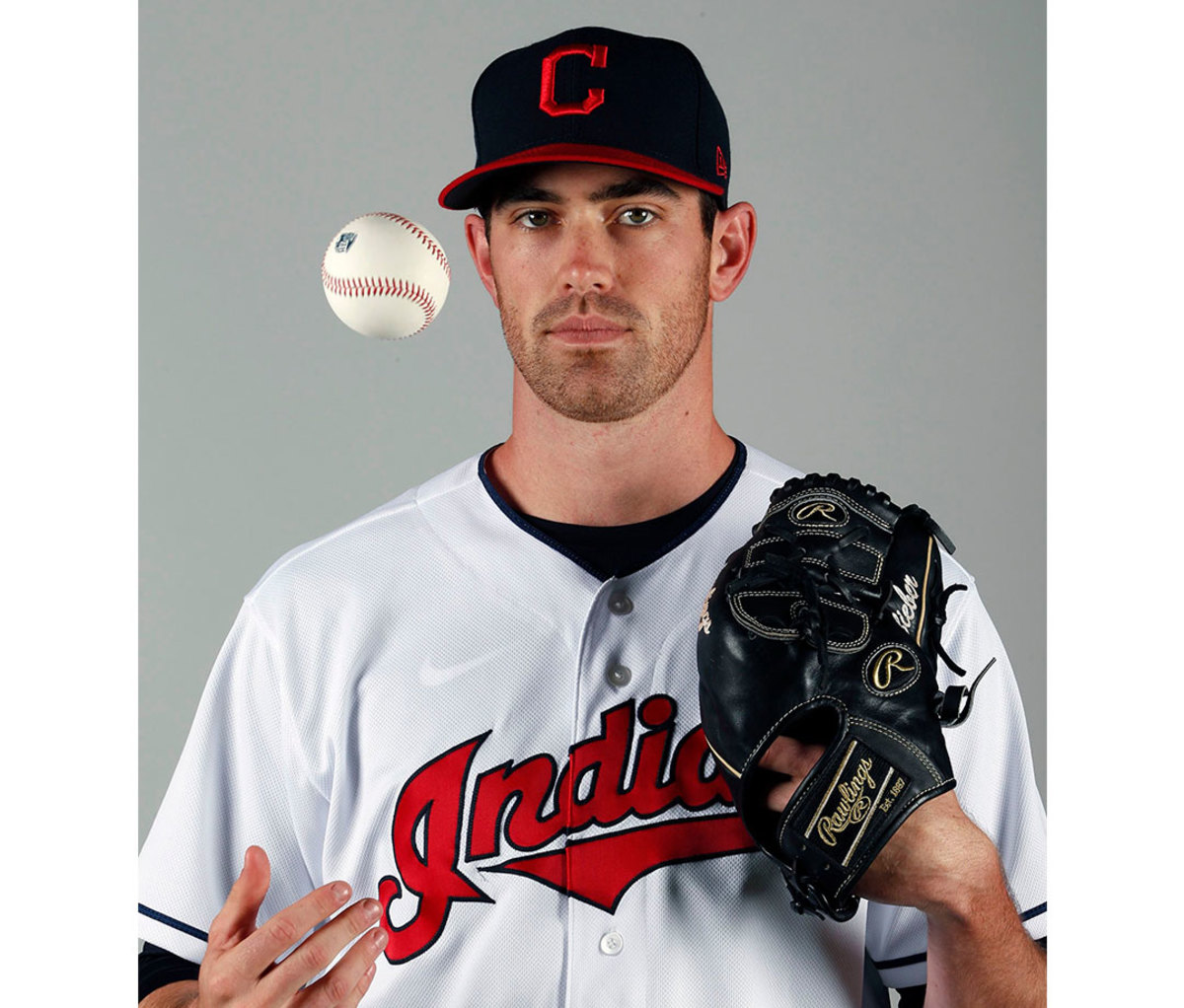
4. Shane Bieber
Cleveland Indians, pitcher
In 2019, this 24-year-old made Beliebers out of a Cleveland fan base bracing for the inevitable departure of ace Cory Kluber by striking out 10.9 batters per nine innings, winning the All Star game MVP award, and finishing fourth in the AL Cy Young race.
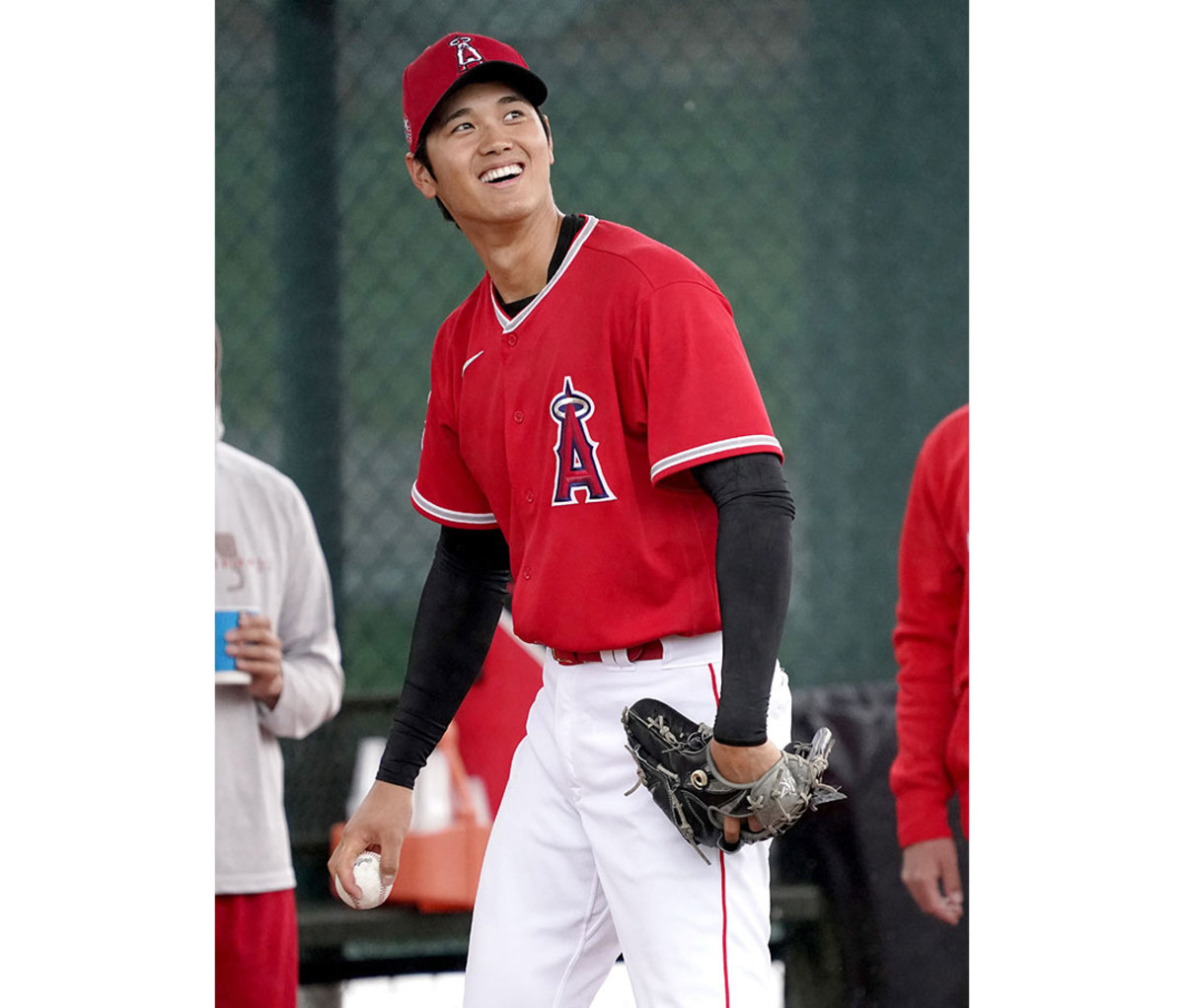
5. Shohei Ohtani
Los Angeles Angels, pitcher and outfield
Two-way star Ohtani didn’t set foot on the mound in his second season, owing to Tommy John surgery. But he did take a big step forward—as a hitter, putting up a .848 OPS and 18 home runs in just under 400 at-bats. In 2020, the complete Show-tani is back, and it’ll be a two-act performance.
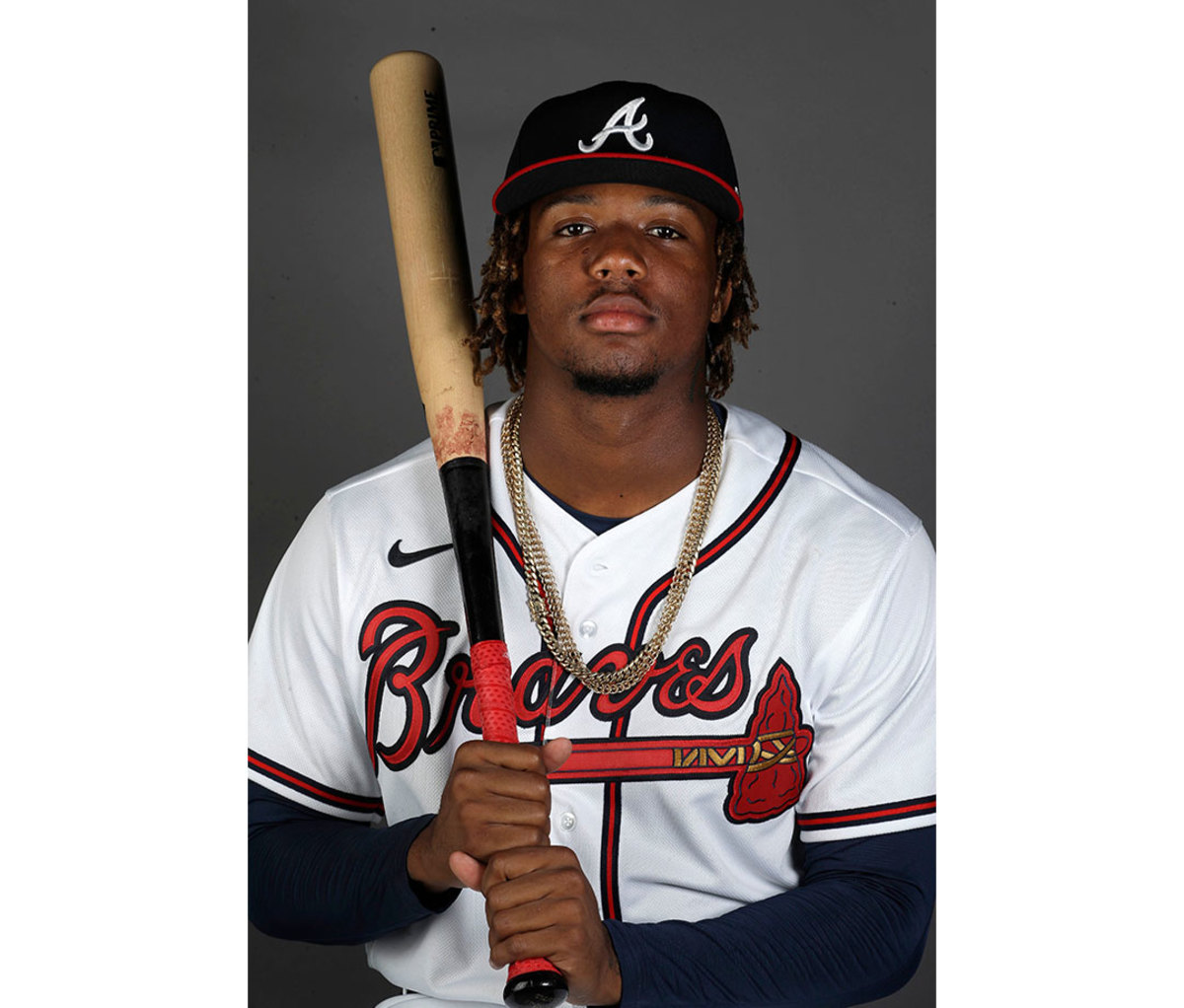
6. Ronald Acuña Jr.
Atlanta Braves, outfield
In just his second season, 22-year-old Acuña came just three steals shy of joining one of baseball’s most exclusive groups—the 40/40 club. If he stays healthy in 2020, the club will have its fifth member, and the NL East will have a serious problem.

7. Jordan Alvarez
Houston Astros, outfield
After a midseason call-up, Alvarez might’ve been the American League’s best hitter in the second half, homering a Pete Alonso–esque 27 times in 87 games, a smidge behind the Polar Bear’s rookie record pace—but Alvarez also batted .313, more than a smidge better than the Polar Bear’s .260. Look for the sluggers to settle who’s better at this summer’s Home Run Derby.
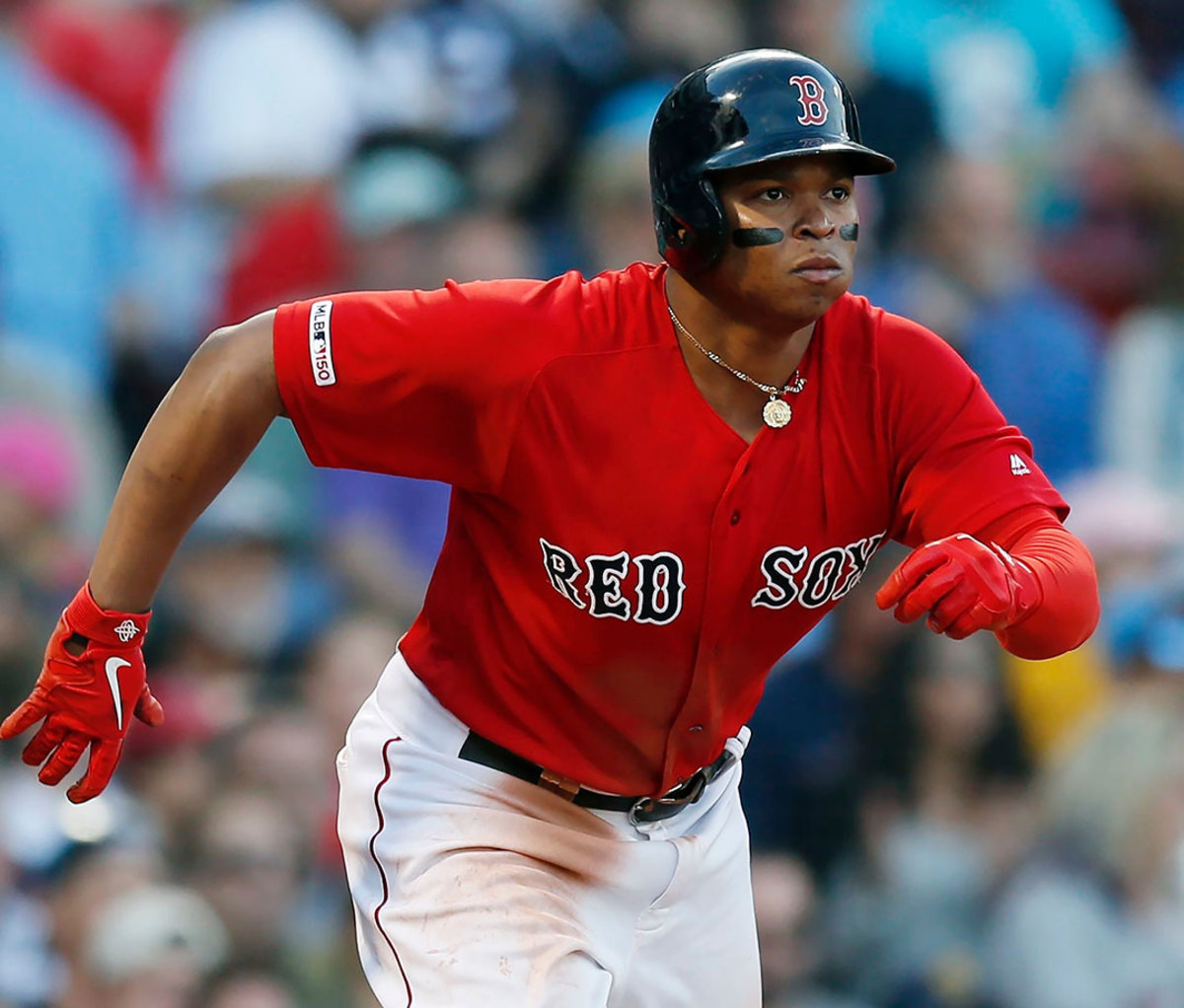
8. Rafael Devers
Boston Red Sox, third base
In his first full season as the Sox’s regular third baseman, Devers hit 32 home runs and batted .311, but the key number may have been his league-leading 54 doubles. Because doubles at age 22 tend to become homers by age 25, after all that baby fat turns into hard muscle.
9. Fernando Tatís Jr.
San Diego Padres, shortstop
A baseball scion is eager for his first full season.
Dominican-bred Fernando Tatís Jr. comes from a long line of gifted power hitters, each one clawing a bit closer to the top of the sport than the one who came before. Tatís’ grandfather never quite reached the pros, but his father, Fernando Tatís Sr., spent 12 years in the big leagues and was a lifetime .265 hitter. Now his 22-year-old namesake looks primed to eclipse him. In just 84 games in 2019, the Padres shortstop hit .317, with 22 home runs and 16 stolen bases. Those numbers could’ve competed with Pete Alonso’s Rookie of the Year performance had Tatís not suffered a back injury that cut short his season by six weeks. (The injury did give Tatís a head start on his off-season side hustle as MLB’s most promising young Instagram thirst trap.)
Despite Tatís’ blistering rookie year, he still got an earful from his pops. “If I go one game without getting any hits,” Tatís says, “he’ll call me right after, like, What happened? Why didn’t you get any hits? And I’m like, Dad, it’s hard to get hits.” Tatís pauses. “We’re on vacation now, so he’s been OK.” Tatís has two younger brothers, ages 18 and 13, both baseball prodigies. Maybe Dad will train his laser focus on them and leave his eldest in peace to dominate the National League? “Nah,” Tatís says. “He’ll just make a group chat. You can be sure we’re all going to get it.”
from Men's Journal https://ift.tt/2NeRMTO
via IFTTT










0 comments:
Post a Comment